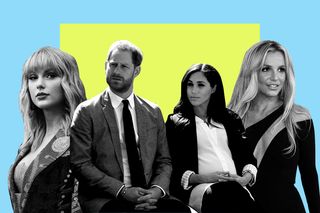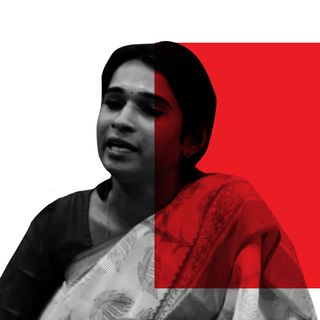
Why We Feel Close to Celebrities We Have Never Met
Called “parasocial” relationships, these one-sided psychological attachments stem from our innate need to bond with other humans.

There’s a recurring meme on the internet: “I don’t care if he’s a fictional character, I still want to marry him.” But the level of investment extends beyond this kind of romantic fancy: say, the palpable scarring many felt with Britney Spears’ story earlier this month. Or the trail of social media stories when the “Friends” reunion aired. The audience was rabid, the cultural mark evident. Then there are groups that work in the background year around, like say, the BTS Army’s shield of armor around the Korean pop band.
These events often get clubbed under the banner of “fandoms” or “stanning” or “shipping” people, but it could manifest as familial, platonic, or romantic attachment. This world of celebrity gossip, crushes, attachment — the investment in lives of people we have never met and aren’t likely to meet ever — has a label. “Parasocial relationships” are when we form a one-sided psychological attachment with actors, influencers, other famous people.
“When we care about someone ― even a celebrity ― they feel like an extension of ourselves, so good things happening to them feels good and bad things happening to them feels bad,” Shira Gabriel, an associate professor of psychology at the University at Buffalo in the U.S., told HuffPost.
Fans have the illusion of a face-to-face relationship with these people in the spotlight. The phenomenon was first identified in 1956, when social scientists Donald Horton and R. Richard Wohl observed American audiences’ associations with television shows, and noted these associations were similar to a real-life social relationships.
“When we form a parasocial bond with someone, we feel like we really know them,” Gabriel said. “We know logically that we don’t, but our primitive brain doesn’t realize that so the feeling is real.”
Why humans form these relationships is a layered story. For one, our tendency to form social connections as a means of survival is well noted — researchers agree on the theory that we have a primitive mechanism that pushes us to form close bonds with people.
“We as a species are dependent on social interaction to survive, and there is a part of our brain that can’t differentiate the face in front of me in real life with the face on TV,” Gayle Stever, who studied fandoms and adult parasocial relationships at SUNY Empire State College in the U.S., told Atlas Obscura.
Related on The Swaddle:
Respectfully Disagree: Has the Lockdown Made Celebrities More #Relatable?
We also know that any relationship also determines how we see ourselves. “People with low self-esteem might use their parasocial relationships to see themselves more positively, much like people with high self-esteem do with their ‘real’ social relationships,” Jaye L. Derrick, an associate professor of psychology who studies PSRs at the University of Houston, told HuffPost.
This is because “a parasocial relationship is safe,” Derrick said. “Your favorite celebrity cannot reach out of a magazine article to reject you. This has changed somewhat as social media has developed, but that’s still rare.”
Historically, parasocial relationships were believed to be a manifestation of loneliness and isolation. This was, however, debunked by one study that found no correlation between loneliness and the intensity of viewers’ parasocial relationship with the onscreen character. Some experts have noted that the relationship, instead, helps the viewers to significantly shape their own identity and broaden their social network rather than restricting it. Other times, these figures serve an aspirational purpose, when people project their desires, hopes, and expectations onto them. We derive satisfaction from their life milestones, when they do an iconic movie, get married.
While researchers have believed that women tend to be more invested in the fates and fancies of celebrities, there is also growing evidence that attests to similar attachment levels for men. For the latter, the relationship is forged with characters like superheroes, such as Iron Man or Captain America, a researcher noted.
Experts have noted resemblances between parasocial relationships and real-life relationships. Just like we feel attracted, emotionally or physically, to people in real life, we may feel the same connection with people on screen — be it movie screens or our 6″ smartphone screens. There’s attraction, interest, a level of commitment, a strain of toxicity, and so on. The very genesis, maintenance, and dissolution of a parasocial relationship is similar in many ways to real-life interpersonal relationships.
Notably, there are two elements from real-life relationships that also translate into parasocial bonds — jealousy and break-ups. “For example, you had Justin Biber having to shut down his Instagram because of the hate he and his then-girlfriend were getting from Jelena ― or Justin and Selena Gomez ― fans,” Tukachinsky Forster, an author studying emotional bonds, told HuffPost. Parasocial jealousy happens in regards to the romantic decisions of an adored celebrity. Like any other emotional bond, parasocial relationships can be positive or negative too.
Like any relationship, parasocial relationships too have to be adequately maintained, no matter how one-sided they may be. Celebrity appearances, fan meets, regularized viewing all keep the relationships going.
A parasocial relationship also ends — perhaps, when a television series ends, a character leaves the show, or when the audience has had enough of a personality in particular. One famous parasocial break-up was the show Friends coming to an end; a 2006 study found that “the more intense the viewers’ parasocial relationships with the characters, the greater the viewers’ distress when the show ended.”
Related on The Swaddle:
Respectfully Disagree: What Makes Relationships Toxic?
One study found that physical attraction was not as important to the development of parasocial relationships. The theory was that the reason for the connection is rooted in the capabilities, personality, and traits of the person. It depends on who they find “socially attractive.” It is not always the looks, you know.
The emotions don’t necessarily have to be of adoration and idealization either — people can also “love to hate” characters and celebrities. Think “Keeping Up With the Kardashians” and the decade-long relationship the Kardashian-Jenner family built with their fans. So even when a famous person does something we don’t like or agree with, it tangibly affects us.
And the attachment is almost equal for both fictional characters and non-television personas. Researchers analyzed the level of attachment people feel for Homer Simpson and Oprah Winfrey, with commitment levels ranging high for both. But what also determined their levels was: how satisfied they felt while watching the figure; how committed they felt to continue watching the figure; and if they had any other good alternatives to the media figure.
Naturally, the internet has done wonders for these relationships to thrive, where celebrities (of all vintage, including bloggers, gamers, YouTubers) have become more accessible and approachable more than ever.
And while the world of famous people is incomplete without their fans, online behavior can also turn toxic for the person at the other end of this relationship. It can harm the mental health of the creator who may often receive hate and unsubstantiated criticism because their audience feels a sense of entitlement over them owing to the perceived personal relationship.
“If you can draw the line, and draw the boundary saying, ‘this is my reality and this is my entertainment,’ there’s nothing wrong with using it as an escapist fantasy,” Advaita, practising psychologist, told The Swaddle in a podcast.
The golden rule when it comes to any relationship is realizing our own, and the other person’s, boundaries. The same applies here too. Teen Vogue noted in an article: “…when the parasocial relationship inspires aggressive action towards the source of your interest or towards other fans, then it’s time to pull back and redirect your energy.”
Saumya Kalia is an Associate Editor at The Swaddle. Her journalism and writing explore issues of social justice, digital sub-cultures, media ecosystem, literature, and memory as they cut across socio-cultural periods. You can reach her at @Saumya_Kalia.
Related


Kerala Trans Woman’s Death by Suicide Highlights Gaps in Gender Affirmative Healthcare
